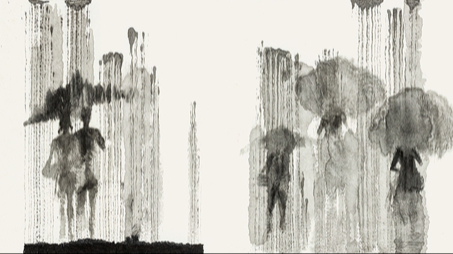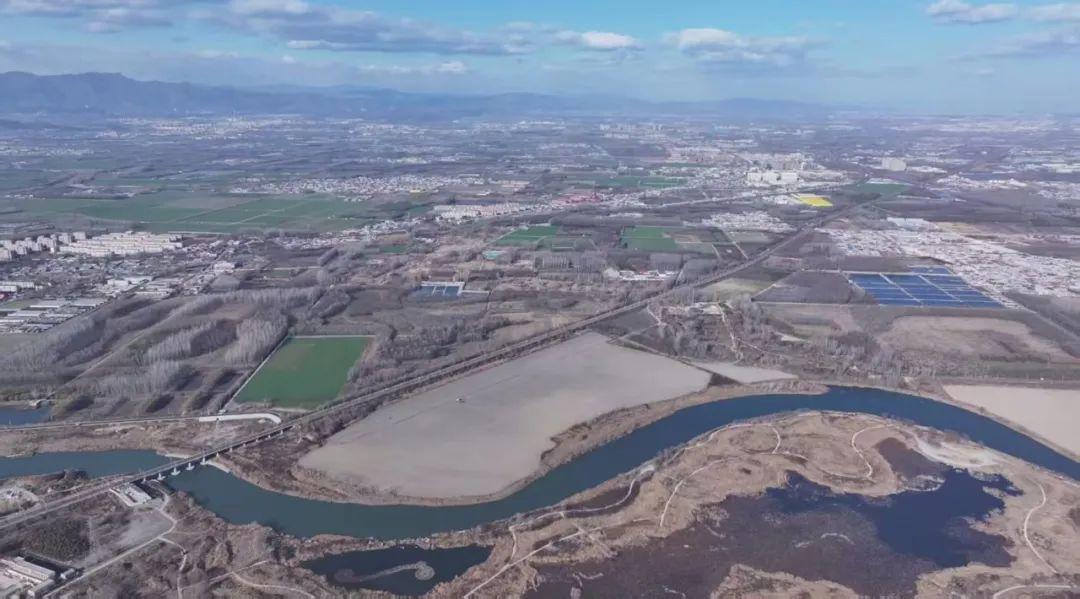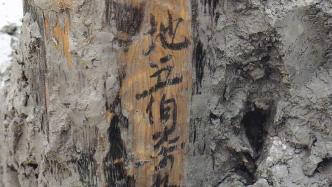
Located at the junction of Zhidan Road and Yanchang West Road in Putuo District, Shanghai, the Shanghai Yuan Dynasty Sluice Site Museum is surrounded by residential houses and buzzing with people. The ruins of the sluices of the Yuan Dynasty displayed in the underground of the museum are rare physical relics left by a national water conservancy project more than 700 years ago. It is a "collision" and "dialogue" between modern Shanghai and history.
Mr. Su Bai, a well-known archaeologist, once commented: "This is the main historical relic of Shanghai. It actually reflects the economic development of the lower reaches of the Yangtze River near the estuary in the Yuan Dynasty, and roughly reflects the development of Jiangnan in the Yuan Dynasty."
The Paper's end-of-year project "Jiangnan Archeology" recently approached the Yuan Dynasty sluice site in Shanghai, and had a conversation with Song Jian, the former director of the Archeology Department of the Shanghai Museum, a research librarian, and a person who experienced the excavation of this archaeological site. "The relics of the sluice gates in the Yuan Dynasty give us the inspiration that we must pay attention to the relationship between urban development and water. Only when the water is well managed can the city develop better." Song Jian said.

Panoramic view of the sluice ruins

The location of the lower reaches of the Wusong River in the Taihu Lake Basin before the Northern Song Dynasty. In the 1980s, Shanghai conducted a geological census and restored the ancient Wusong River channel. The red mark in the picture is the current Suzhou Creek.
In May 2001, during the construction of Zhidanyuan commercial housing in Putuo District, Shanghai, a site of a Yuan Dynasty sluice was accidentally discovered. Later, through continuous archaeological exploration, document verification, and expert argumentation by archaeological experts, it was confirmed that this is a Yuan Dynasty sluice site related to the Wusong River, and it was Ren Renfa, a water conservancy expert and calligrapher and painter of the Yuan Dynasty, who presided over this water conservancy project.
Song Jian, the former director of the Archeology Department of the Shanghai Museum and a research librarian, introduced to "Paper News·Ancient Art" that Ren Renfa once built six stone gates (1304-1325) on a tributary of the Wusong River in Jiading, Shanghai, and is currently able to explore There is only one site that remains intact.
The discovery of Zhidanyuan Sluice has an extremely important position in the history of water conservancy engineering development in China, especially for the study of water conservancy projects in the Jiangnan area during the Song and Yuan Dynasties, the historical changes of the Wusong River Basin, the economic development of the Wusong River to the entire Yangtze River Delta, and its impact on Shanghai. The role played by towns and cities is of great scientific value.
In 2006, the Yuan Dynasty sluice site of Zhidanyuan was selected as one of the top ten archaeological discoveries in China. In 2013, the Yuan Dynasty sluice site of Zhidanyuan was announced by the State Council as the seventh batch of national key cultural relics protection units.

The Yuan Dynasty Sluice Site Museum in Shanghai looks like a sluice.

Song Jian at the excavation site of Zhidanyuan
The site "robbed" from the developer
The Paper: How did the Yuan Dynasty sluice site of Zhidanyuan be discovered in the first place? I heard that you also "robbed" this important site from the developer?
Song Jian: The major discovery of Zhidanyuan was during the Labor Day of 2001. At that time, piling was being carried out for the construction of commercial housing in Zhidanyuan Community, and the piling was about 7 meters deep underground, so they could not go down. They made a special drill pipe and drilled out a circular stone slab made of two stone slabs from the ground. It should be A stone structure. Where the two stone slabs are joined together, an iron ingot tenon is also used to fix the two stone slabs.
The project construction party thought that there might be important discoveries underground, so they transferred the information to the Shanghai Museum. This matter is managed by the Archaeological Department I lead, so the call came to me.
I immediately informed my colleagues in the department, Chen Jie, the current deputy director of the Shanghai Museum, who was studying for a Ph.D. at East China Normal University at the time, and lived very close to the ruins. Based on his description of the scene and photos, I conclude that this will be an important discovery, and I hope that the construction party must ensure that no construction will be started during the May Day.
On the first working day of May 8, I immediately reported to the Shanghai Cultural Management Committee. At that time, the Shanghai Cultural Management Committee and the Shanghai Museum were still working together. The Cultural Management Committee held a working meeting in the afternoon. At that time, the opinions were not very unified. , I suspect that there are any ancient relics in Shanghai at a depth of 7 meters. Some people think that they may be air-raid shelters or bunkers left over from the past war years. But I insist on my opinion, thinking that this will be a very important discovery, and such an important site cannot be missed from our hands.
The Paper: On what basis did you judge that it would be very important?
Song Jian: I drilled the iron ingot tenon based on the pipe. It is a very important building material in ancient buildings. It mainly connects the joints of stone materials. Therefore, I think the relics under the ground cannot be modern things, they must be ancient. of. After I finished the report, Mr. Wang Qingzheng, then deputy director of the Cultural Management Committee, also recognized the value of the iron ingot tenon, because the shape of the iron ingot is very similar to the ancient silver ingot, and he also believed that the age of this thing is not too late. But this matter is very complicated. A site is buried 7 meters deep underground, and the land has been auctioned to a real estate developer, so it is difficult for him to make a decision, so he told me, I will give you a task, You have to figure out the age and nature of the ruins within 7 days, and draw a preliminary conclusion for reporting.
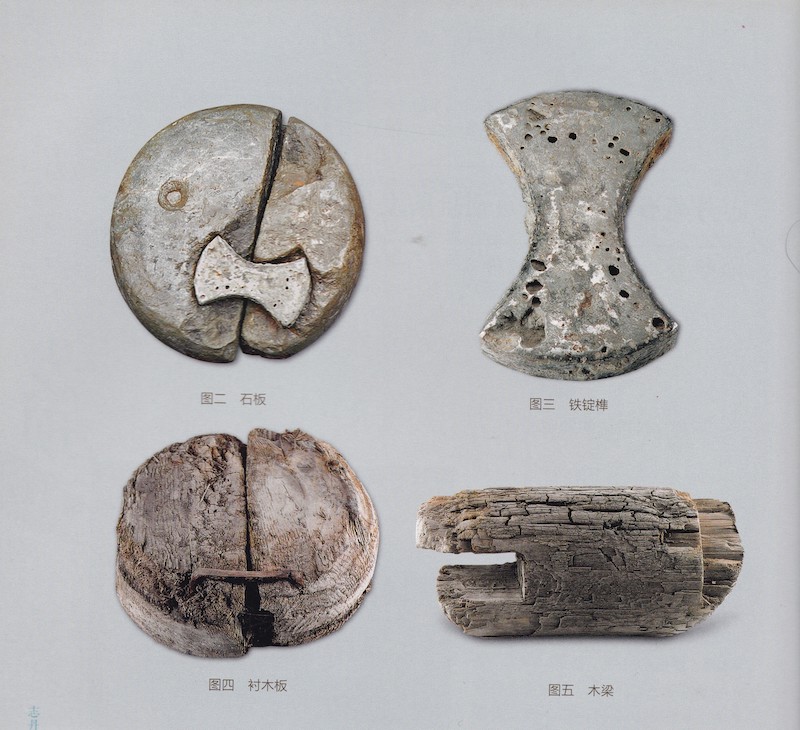
Borehole unearthed
7 days is too short, I immediately turned pale after hearing it. Mr. Wang Qingzheng said that there is a lot of controversy now, because real estate development in that place, you let people stop working, and after the government paid the money, and you dig up something relatively recent, we will definitely not be able to hold the blog. Later, I bargained with him for another 3 days. I said that if I can’t come up with a preliminary conclusion within 10 days, I have nothing to say, and I will ask the developer to build a house. If they come up with a preliminary conclusion within 10 days, then it is up to all parties to decide what to do?
The depth of the ground is more than 7 meters, and ordinary archaeological drilling methods cannot solve it. Fortunately, I have a friend who is the person in charge of the Shanghai Geotechnical Testing Center. I immediately contacted him and asked him to help me solve this difficult problem.
The next day he organized a group of professional geological prospecting personnel to the site, and used various methods to find out the scope of the underground ruins. Probably 1000~1500 square meters. He helped me figure out the scope, and it is up to me to study and judge the specific nature.
How did I judge and come to this conclusion? One is based on the iron ingot tenon that was drilled on May 3. I compared its shape with the silver ingot that was popular around the Yuan Dynasty, called Yuanbao at that time. They are relatively similar, so I roughly date it around the Yuan Dynasty.
According to my past knowledge of Shanghai archeology, Shanghai archeology started from the late 1950s to the new century, and it has been almost 40 or 50 years. I have a general outline and a broad understanding of the distribution of ancient remains in Shanghai.
In addition, according to the map, the distance between it and Suzhou Creek is about one kilometer. Suzhou Creek was called the Wusong River in ancient times. It is recorded in the literature that "the old Wusong River is deep and wide, and it can rival Qianpu." Since the Tang Dynasty, due to silting, the waterway of the Wusong River has narrowed, from twenty miles in the Tang Dynasty to nine miles in the Song Dynasty. In the Ming Dynasty, the width of the river was less than one mile, and now it has become such a small river as Suzhou Creek. So at that time, the place where the site was located may be close to the Wusong River. Based on this, I judged that the building may be related to the Wusong River, and it must be related to water. Buildings and structures related to water, such as dams, sluices, and water gates, are all possible. I gave it a relatively broad name called hydraulic structures, so that my preliminary conclusion came out. It is buried 7 meters deep underground. , a hydraulic building in the Song and Yuan Dynasties with an area ranging from 1,000 square meters to 1,500 square meters.
The Paper: You were able to make such a detailed judgment at that time?
Song Jian: Some people think that I am too bold, and it will be a disaster if I make a mistake. But my judgment based on the sensitivity and sense of responsibility of an archaeologist, or some experience accumulated over the years, has a certain basis. If my conclusion is ambiguous, the leader must feel that this conclusion is too vague and not convincing, and cannot arouse the attention of the superiors to this relic.

Jinzhongdu Shuiguan Ruins (Source: Internet)
At the same time, there is another very coincidental thing. At that time, a colleague of the Cultural Management Committee led a team to Beijing to investigate and saw the Jinzhongdu Shuiguan site, which was very similar to our discovery in all aspects, and it further proved what I said about the Song and Yuan waters. construction concept. Under the comprehensive promotion of these factors, the leaders of the cultural management committee decided to protect it. After their active communication, the municipal party committee and government finally decided that this is a very important ancient cultural site in Shanghai, which needs to be protected and excavated.
The best preserved Yuan Dynasty sluice site
The Paper: How long did the excavation take?
Song Jian: The excavation was more cautious. In fact, it was excavated in two stages. The first stage was a small-scale trial excavation in 2002. It was confirmed that this was a sluice site, which confirmed our drilling results and judgment; the official excavation in 2006 revealed that The whole picture of the Zhidanyuan sluice site was opened, and it was selected as one of the top ten new archaeological discoveries in China in 2006.
The Paper: During the archaeological excavation, what evidence did you find to confirm your previous conjecture and determine the age and nature of the site?
Song Jian: The most important evidence is that we found the stamp of Basiba inscription on the wooden pile, so it can be inferred that the Zhidanyuan sluice was built in the Yuan Dynasty. Basiba script is the official language of the Yuan Dynasty. It was created by Basiba, the national teacher at that time, and promulgated throughout the country in the sixth year of Zhiyuan (1269). With the demise of the Mongolian Yuan Empire, Bhasba script was also abandoned.

Phagsi Ba script stamp on wooden stake
Archaeological discoveries of gates, gate walls, water-passing stone surfaces, wooden piles, etc. determined that the nature of the site was a sluice, not a dam or a water gate.
Archeology reveals that the Zhidanyuan sluice has a total area of about 1,300 square meters, with a symmetrical figure-eight shape and a northwest-southeast direction.
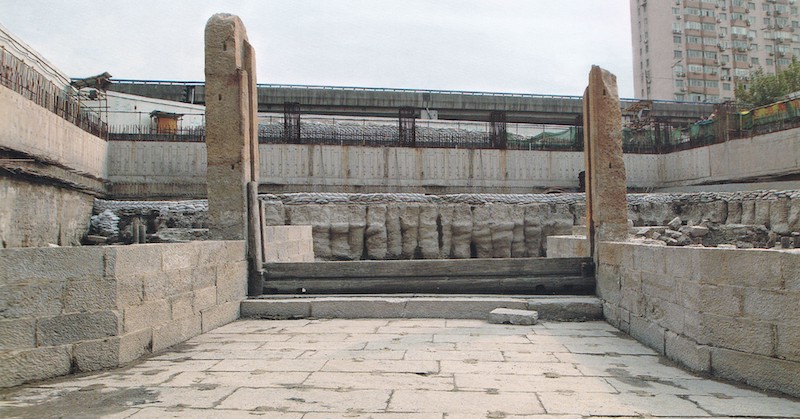
gate panorama
At the same time, the city also decided to build a sluice museum on the original site and excavate it on a large scale.
The Paper: During the archaeological excavations, you had the idea of building a sluice museum? At that time, the concept of simultaneous excavation and simultaneous protection and utilization was formed?
Song Jian: Yes, after confirming that it was the ruins of the sluice, the city decided to build a sluice museum. Because its discovery is very important, it is the first ancient site discovered in the urban area of Shanghai about 700 years ago; secondly, at that time, we in China had already begun to have a new concept of archaeological excavation, archaeology not for the sake of archaeology , Excavation and excavation, archaeological excavation should be combined with protection and display, and the concept of cultural heritage has initially formed. So when excavating, it was decided to build a museum.

Shanghai Yuan Dynasty Sluice Site Museum
The Paper: The Zhidanyuan Sluice Museum is also the first site museum in Shanghai.
Song Jian: Strictly speaking, even now it is the only site museum. Although some museums are also called ruins museums, such as the Songze Ruins Museum in Qingpu, it is indeed built on the ruins, but what it displays is not the ruins itself, but the unearthed objects of the ruins. After the excavation of Zhidanyuan, it It is the ontology of the display site. Strictly speaking, the site museum must display the site itself. That's why we say that the Zhidanyuan Yuan Dynasty Sluice Museum is the first site museum in Shanghai, which is such a concept.

Interior view of Shanghai Yuan Dynasty Sluice Site Museum
"When the tide comes, close the gate and reject it; when the tide recedes, open the gate and let it go"
The Paper: How did you later determine that the builder of this sluice was Ren Renfa of the Yuan Dynasty?
Song Jian: After confirming that it is the site of the sluice, we consulted a lot of ancient documents. According to the records, the flooding of the Wusong River was still a serious problem in the Yuan Dynasty, and the imperial court continued to send people to control the flood. Ren Ren, a native of Shanghai, found that one of the most important methods he used to control floods was to build sluice gates.

Wooden threshold, well threshold stone and bluestone strips on both sides
According to literature records, Ren Renfa built many sluices on the tributaries of the Wusong River, including wooden gates and stone gates. Among them, the effect of the wooden gates is not satisfactory, and some of them were even destroyed by the rapid water soon after they were built. Therefore, in the second year of Taiding (1325), Ren Renfa wrote to the imperial court, saying that "if the Wusong River does not install stone gates to let the river flow through, the rivers and lakes will flood, and the tide will bring sand into the port, which will be easy to bury and waste construction materials." This historical material was recorded in "Water Conservancy Collection" written by Ren Renfa. The imperial court immediately approved the proposal, and Ren Renfa was ordered to build a number of stone gates in the Wusong River Basin. He said in "Water Conservancy Collection" that "when the tide comes, the gate will be closed and rejected, and when the tide ebbs, the gate will be opened and let go. Stone gates are one of the best ways to dredge the Wusong River.
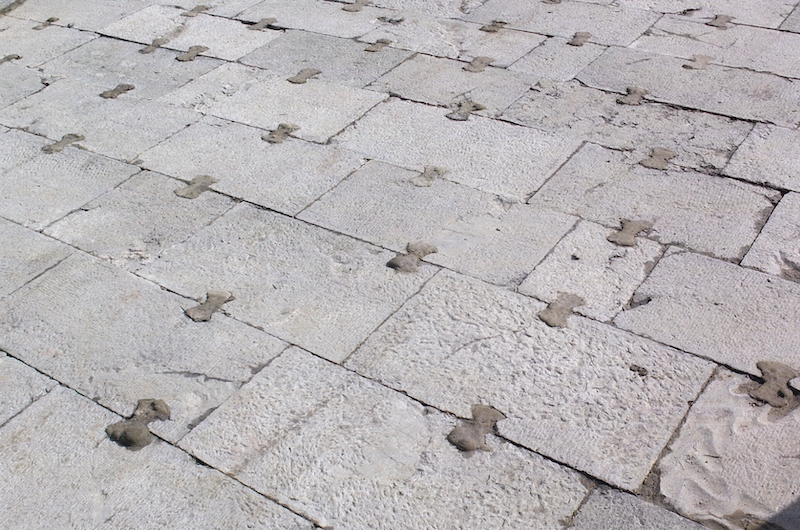
Slate at the bottom of the water outlet
Although we have not found conclusive written evidence in archaeological excavations to confirm the name or builder of the sluice, based on the above speculation, the Zhidanyuan sluice is likely to be one of the stone sluices built by Ren Renfa at that time.
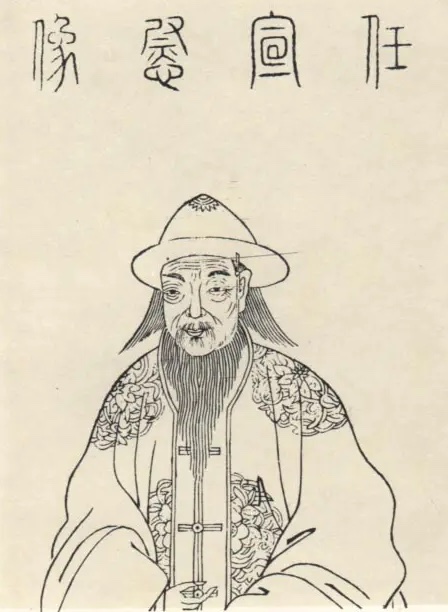
Ren Renfa
Ren Renfa is a native of Shanghai County, Songjiang Prefecture. His main contributions are water conservancy control and engineering construction. He has successively presided over projects such as repairing the Wusong River and Dadu (now Beijing) Tonghui River, and has a water conservancy project book "Water Conservancy Collection" handed down. He went to the deputy envoy of Xuanwei in East Zhejiang Road. In addition, he was also a famous painter in the Yuan Dynasty. He was good at calligraphy and painting, and he was especially good at painting horses. Chonggu Town, Qingpu District, Shanghai is the site of the tombs of the Ren family in the Yuan Dynasty. There are a large number of exquisite cultural relics such as porcelain, lacquerware, bronze ware, gold and silver ware unearthed.

Ren Renfa's "Two Horses" Collection of the Palace Museum (Source: Internet)

Projection of the construction process of the sluice in the Yuan Dynasty: nailing the ground.
The Paper: The sluice built by Ren Renfa to control the Wusong River, is this the only one that has been discovered and preserved so far?
Song Jian: There should be other places, but this is the one that has been discovered now. We did some surveys near Zhidan Garden back then, and some citizens reported that they had seen two similar stone gate pillars in some places when they were young. But there is no conclusive evidence, so this is the only one that has been really discovered and excavated.
The Paper: According to archaeological excavations, what kind of water conservancy project was this sluice in those days? What's so special about building it?
Song Jian: The Zhidanyuan sluice is a national project, and its design and construction are strictly in accordance with the regulations at that time. Its method is basically the same as the record of "making stones" in Volume 10 of "Water Conservancy Collection" in Yuan Dynasty. In addition, during the archaeological excavation, not only the official stamps on the wooden piles were found, but also many wooden pile numbers inscribed in ink on the upper part of the wooden piles, indicating that every detail of the project has been recorded in detail, and it is also a reference to the construction of the project. It is a supervisory measure reflecting the importance of the Zhidanyuan sluice project and the rigor of the construction process.

writing on wooden posts
Zhidanyuan sluice is a landmark relic in the history of water conservancy engineering in China. It provides the best material for the study of ancient sluice engineering practices. The builders of the sluice recorded their experience in harnessing the Wusong River over the years in the "Water Conservancy Collection". Today we can combine the literature and materials with the archaeological discoveries at the Zhidanyuan site to fully restore the construction process of the sluice in the Yuan Dynasty.

wood pile
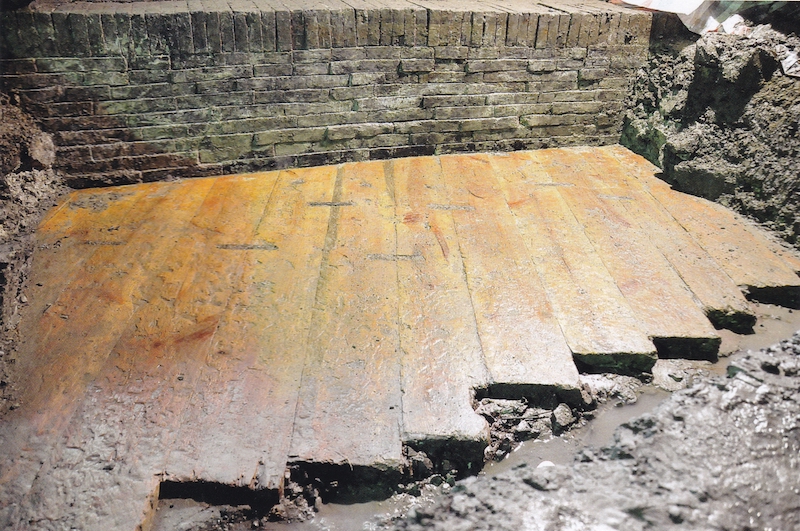
Lining stone square
Enlightenment to Modern Times: Only when water is well managed can cities develop better
The Paper: What is the significance of the discovery of the Zhidanyuan sluice site?
Song Jian: One of its important significances is that it serves as evidence for history and the importance that the imperial court attached to flood control work recorded in documents at that time. It reflects the fact that the water control activities at that time did exist through physical materials, and restores the Yuan Dynasty through archaeological excavations. This is an important practical significance of modern water control projects.
Second, it reflects the sophistication of water conservancy projects at that time. Its construction is strictly regulated, which shows that the development of water conservancy projects in our country has reached a very high level in the Song and Yuan Dynasties, and it also reflects from one side It shows the economic development level of Jiangnan in the Yuan Dynasty.

Geographical sketch of Zhidanyuan sluice site
From a larger level, it also reflects the close relationship between ancient towns and urban development and water. Shanghai has been a water town since ancient times, and its economic center and political center all migrated along with the water. For example, apart from Huating, the economic and political center of Shanghai in the Tang Dynasty, Qinglong Town was also a very important center. Why is it in Qinglong Town? Because Qinglong Town was on the edge of the Wusong River, the traffic and trade at that time were mainly carried out through waterways and rivers, so such an important town was formed on the edge of the Wusong River. After the Tang and Song Dynasties, as the river gradually silted up and submerged, it brought great obstacles to people's lives, and the towns gradually fell into disuse and were buried underground. By the Ming Dynasty, the towns and urban centers of Shanghai were also transferred from the Wusong River to the Huangpu River.
This also brings inspiration to our modern city managers: the centers of towns and cities are closely related to rivers, so we must protect rivers and waterways. This is also a good inspiration for us to discuss the future urban development of Shanghai, that is, we must study the development process of the city and the migration process of the city based on the rivers and waterways, so as to plan the future city. Only when the water is well managed can the city become better. If the water is not properly controlled and managed, it will easily have a negative impact on the development of cities and towns.
Finally, it is also an important inspiration for our archaeological work, that is, to find important cultural relics, we must search for them based on ancient river channels and ancient water, which is also a significance for our archaeological work.
